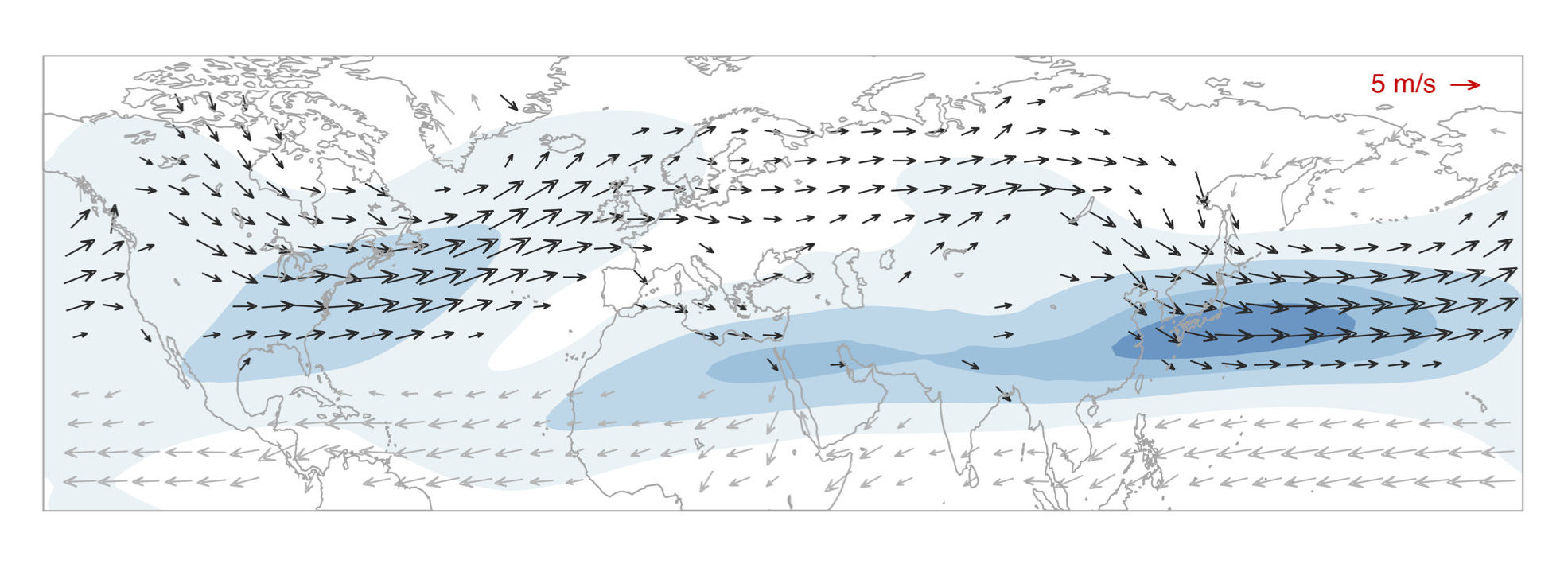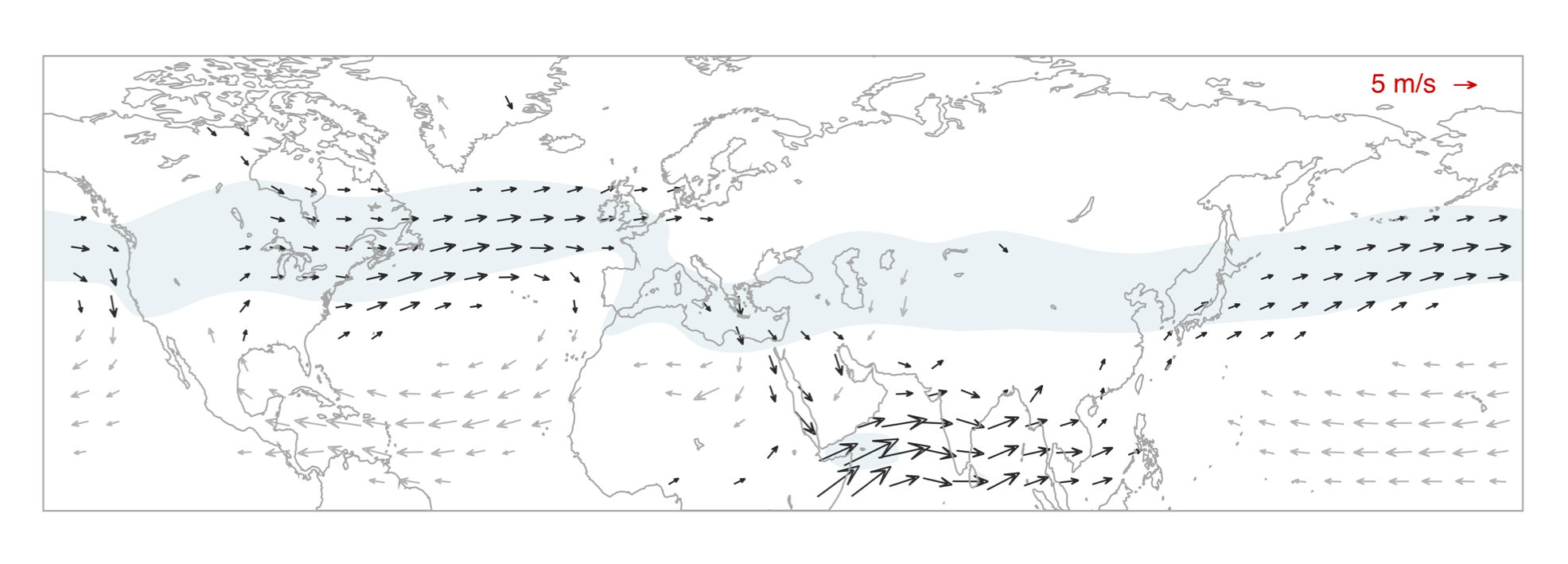A new study by jetSTREAM postdoctoral researcher Erica Madonna finds that a weather pattern known as European-Scandinavian blocking tends to occur when the North Atlantic jet stream is in a “split” configuration.

Schematic of four typical configurations of the North Atlantic jet stream (black arrow) and their associated pressure patterns (colour shading). Red indicates anticylonic pressure anomalies (also known as highs or ridges), where winds circulate clockwise; these are a signature of blocking events.
Previous studies identified connections between other types of blocking and the North Atlantic jet: blocking over Greenland with southern jets, blocking/ridge anomalies off the Iberian peninsula with northern jets, and unblocked flow with central jets. However, European-Scandinavian blocking remained somewhat unclear. The cluster analysis used in this study was able to pick out an additional split jet structure, which is slightly more complicated, and tie it to blocking over the continent.
Read more about the work here or download the research article:
Madonna, E., C. Li, C. Grams and T. Woollings, The link between eddy-driven jet variability and weather regimes in the North Atlantic-European sector, QJRMS, 143, 2960-2972, 2017.


